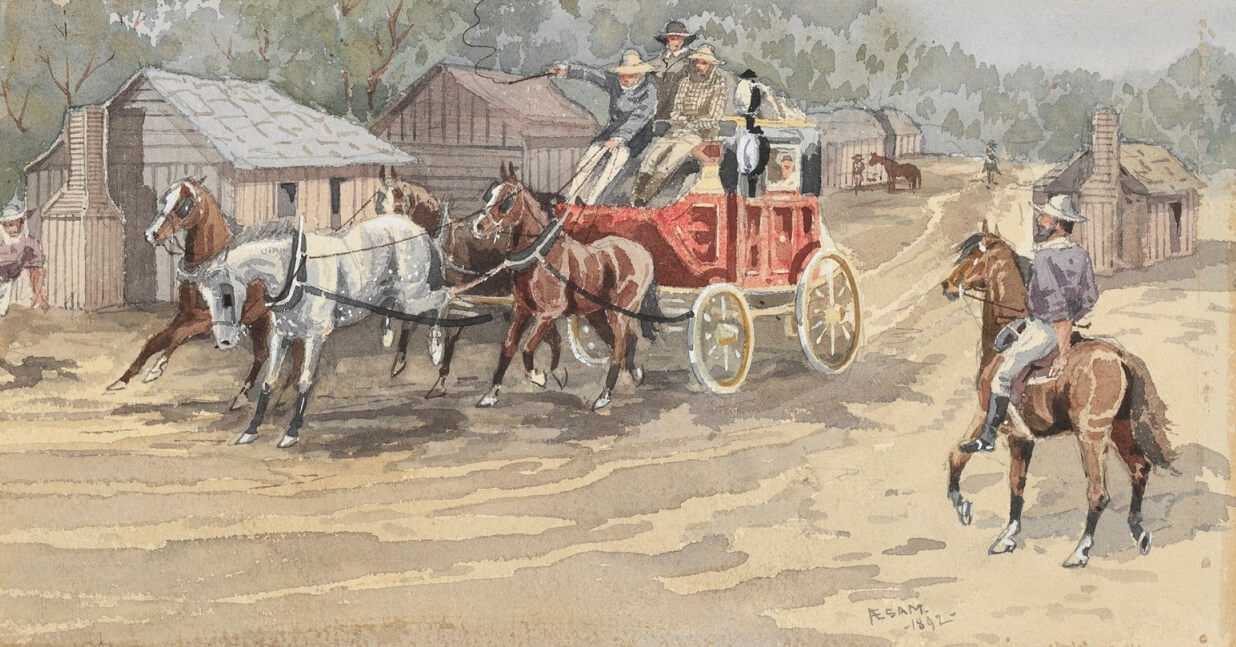By the 1870s most of rural Victoria was networked by coach routes, and the most famous coaching company was Cobb & Co.
Cobb & Co coach, Harcourt, Victoria, by Gustav Melbourne Damman, photographer, c.1895
Reproduced courtesy State Library Victoria
Cobb & Co was formed in 1853 by American Freeman Cobb, operating horse-drawn mail and passenger coaches between Melbourne and the Victorian goldfields. The company made their maiden journey, from Melbourne to the Forest Creek gold diggings near Castlemaine, on 30 January 1854. Travelling about 15 miles per hour, they arrived in half the time of their competitors. Routes to Bendigo and Ballarat soon followed.
Cobb & Co was renowned for their speed and reliability, delivering passengers and mail on time despite rough roads and often poor weather conditions. By the 1870s they operated in Victoria, New South Wales and Queensland, harnessing some 6,000 horses a day and covering 45,000 kms of road per week.
Why was Cobb & Co so successful?
Unlike their competitors, who often delayed departures waiting for bookings to fill the seats, Cobb & Co ran to a regular timetable. They also offered passengers a more comfortable ride. Most coaching companies used English vehicles, with rigid bodies and stiff metal springs — ideal for paved city roads, but entirely unsuitable for country Victorian ’tracks’. Cobb & Co imported American coaches. The coach bodies were suspended on thick strips of leather called thoroughbraces, which helped to ‘isolate the passenger and driver from the jolts and bumps of the rough unmade country roads.’
‘Off for the holidays outside Cobb’s Office, Bourke Street’, artist unknown, 1881
Reproduced courtesy State Library Victoria
Finally, Cobb & Co was much faster than their competitors. The company established ‘change stations’ every ten miles along the coach routes, where they changed horses. Fresh horses meant the coaches could maintain high speeds across long distances. Cobb & Co employed hundreds of stable hands to ensure the swift and safe exchange of horses at each change station.
With the development of the railway and the introduction of the motor car the horse-drawn coach disappeared, as did the many jobs it engendered.
‘Passengers for coach, old changing place, Victoria’, by Arthur Esam, artist, 1885
Reproduced courtesy State Library Victoria
‘Cobb & Co. coach scene’, by Arthur Esam, artist, 1892
Reproduced courtesy State Library Victoria
‘Melbourne to Ballarat mail coach, Cobb & Co.’, by Arthur Esam, 1894
Reproduced courtesy State Library Victoria







